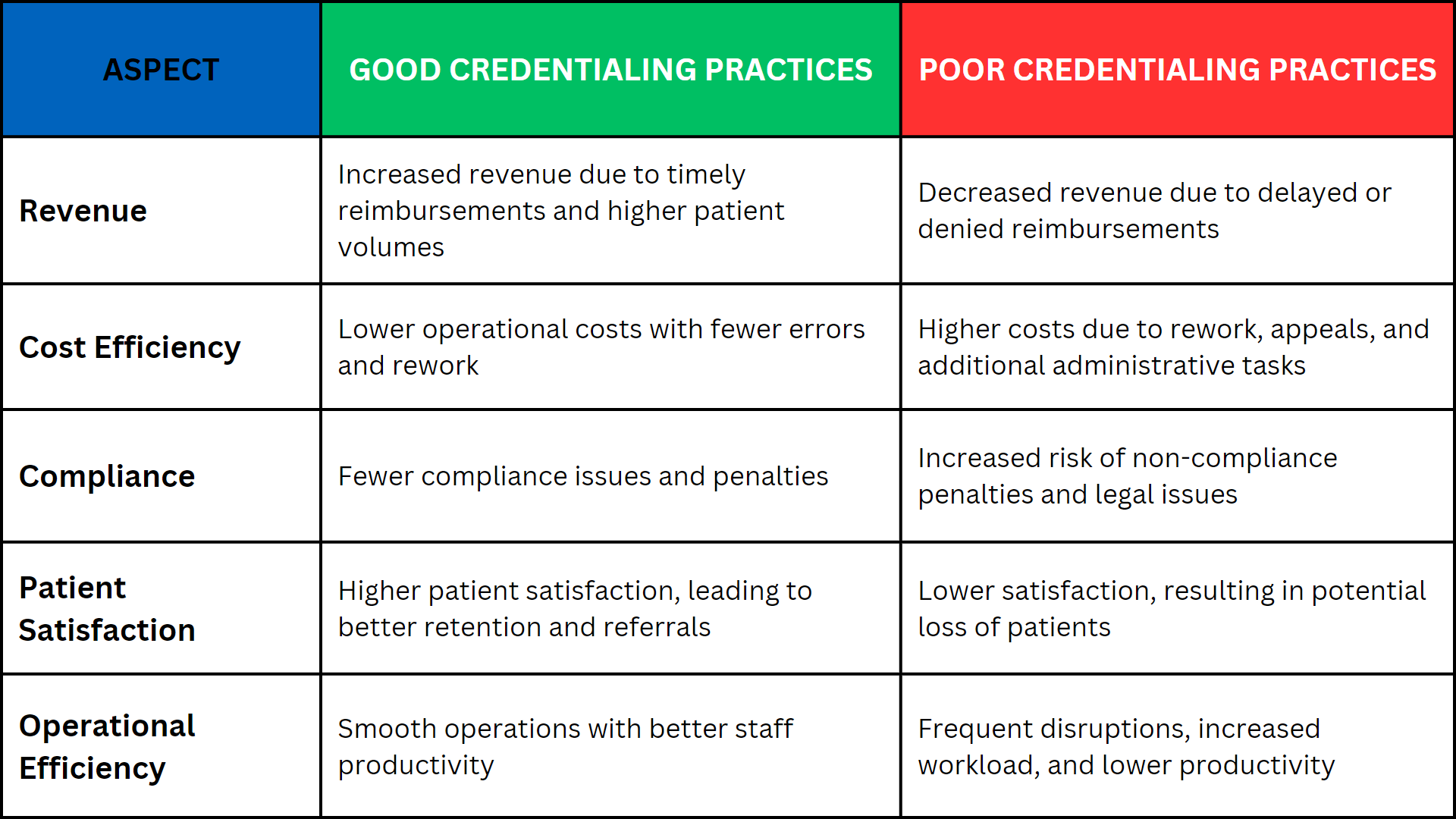- October 7, 2024
- Posted by: admin
- Categories: Contract Management, DME Credentialing, Strategic Credentialing

Introduction:
In the competitive world of Durable Medical Equipment (DME), providers often focus on visible costs like equipment and staffing. However, the hidden costs associated with poor credentialing can significantly impact a DME business’s bottom line. As we navigate through 2024, understanding and addressing these hidden costs is more crucial than ever. This blog post will explore the financial implications of inadequate credentialing practices and provide strategies to ensure your DME business stays ahead of the curve.
The True Cost of Credentialing Errors
Credentialing mistakes can lead to various financial repercussions:
- Claim Denials:
- Issue: Incorrectly credentialed providers lead to rejected claims.
- Cost: Potential loss of revenue, increased administrative work for resubmissions.
- Delayed Payments:
- Issue: Incomplete credentialing information slows down the payment process.
- Cost: Cash flow disruptions, potential need for short-term financing.
- Network Exclusion:
- Issue: Failure to meet credentialing standards can result in network exclusion.
- Cost: Loss of patient volume, reduced market share.
- Compliance Penalties:
- Issue: Non-compliance with credentialing requirements can lead to fines.
- Cost: Direct financial penalties, potential legal fees.
The Ripple Effect on Operations
Poor credentialing doesn’t just affect your bottom line; it can disrupt your entire operation:
- Administrative Burden:
- Issue: Constantly addressing credentialing issues diverts staff from other tasks.
- Cost: Reduced operational efficiency, potential need for additional staff.
- Provider Frustration:
- Issue: Credentialing problems can frustrate and demotivate your team.
- Cost: Potential turnover, recruitment and training expenses.
- Reputation Damage:
- Issue: Credentialing errors can harm your reputation with payers and patients.
- Cost: Lost business opportunities, marketing expenses to rebuild trust.
The Investment in Proper Credentialing
While robust credentialing processes require investment, the returns are substantial:
- Technology Solutions:
- Investment: Implementing credentialing software and databases.
- Return: Streamlined processes, reduced errors, better data management.
- Staff Training:
- Investment: Ongoing education for credentialing staff.
- Return: Fewer mistakes, more efficient processes, ability to handle complex cases.
- Quality Assurance Measures:
- Investment: Implementing rigorous QA processes for credentialing.
- Return: Reduced denials, faster approvals, improved payer relationships.
Best Practices to Minimize Hidden Costs
Implement these strategies to optimize your credentialing process:
- Centralize Credentialing Operations:
- Create a dedicated credentialing department or team.
- Implement standardized processes across all payers and providers.
- Leverage Technology:
- Invest in robust credentialing software.
- Utilize automated verification services for real-time updates.
- Implement Proactive Monitoring:
- Set up alerts for expiring credentials.
- Regularly audit credentialing files for completeness and accuracy.
- Prioritize Ongoing Education:
- Keep staff updated on changing regulations and payer requirements.
- Encourage professional certifications in healthcare credentialing.
Measuring the ROI of Effective Credentialing
To justify investments in credentialing, track these key metrics:
- Claim Denial Rate:
- Monitor the percentage of claims denied due to credentialing issues.
- Set goals for continuous improvement.
- Days in Accounts Receivable:
- Track how quickly you’re paid after submitting claims.
- Look for improvements as credentialing processes are optimized.
- Provider Onboarding Time:
- Measure how long it takes to fully credential new providers.
- Aim to reduce this time without sacrificing accuracy.
- Audit Performance:
- Track your performance in payer audits.
- Use results to identify areas for improvement in your credentialing process.
Conclusion:
The hidden costs of poor DME credentialing can significantly impact your business’s financial health and operational efficiency. By recognizing these costs and implementing best practices, you can transform your credentialing process from a potential liability into a strategic asset.
Investing in proper credentialing is not just about avoiding costs; it’s about creating a foundation for sustainable growth and success in the competitive DME market. As we continue through 2024, those providers who prioritize excellence in credentialing will be best positioned to thrive, building strong relationships with payers, providers, and patients alike.
How WWS Can Help:
At Wonder Worth Solutions (WWS), we understand the critical role that effective credentialing plays in the success of DME providers. Our team of experts can help you:
- Assess your current credentialing processes and identify areas for improvement
- Implement cutting-edge credentialing technologies tailored to your needs
- Develop comprehensive training programs for your credentialing staff
- Create robust quality assurance measures to minimize errors and denials
- Optimize your credentialing operations for maximum efficiency and ROI
Let WWS be your partner in transforming your DME credentialing from a cost center into a strategic advantage. Our expertise can help you navigate the complexities of credentialing, reduce hidden costs, and position your business for sustainable growth.
CTA:
Ready to uncover and eliminate the hidden costs in your DME credentialing process? Let’s work together to optimize your operations and boost your bottom line. Schedule your Collaborative Discovery Meeting with our credentialing experts today!
Click here to book: https://calendly.com/wwshcs/wws-collaborative-discovery-meeting
